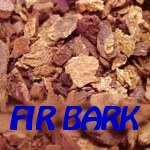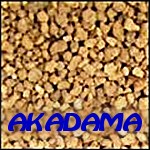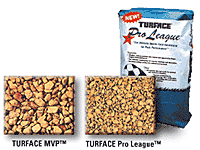|
Do you ever wonder why there are so many different kinds of bonsai soil? Why, no matter whom you ask, you will get a different answer?
When it comes to soil, strong opinions abound, and it is just about as easy to talk politics or religion as it is bonsai soil. Just about the only thing that most of us agree on is that bonsai soil must have good drainage. After that, the fight is on.
If there are so many different opinions, why do they all work? Well most of them anyway...
Trees, like all living organisms, can live in a wide range of conditions. Exceed this range on either extreme and one winds up with firewood. Stay within it and the tree will somehow survive. Obviously, the closer you get to the middle of that range the happier the tree is. The closer you get to the extreme sides of that range, the more the tree struggles to survive.
The range of conditions for survival is much wider than most of us think it is, and that is what makes all those different soil mixes work.
1. Purpose of Soil
Soil provides the following:
- Something for the tree to anchor itself in
- Nourishment
- Moisture
If your mixture accomplishes this in close to the proper amounts and close to the right time, it will work. The tree will survive. Maybe not thrive, but at least survive.
2. What Makes a Good Soil?
What makes a good bonsai soil is not so much what the ingredients are made of but the function of those ingredients.
All soils, not just bonsai soils, are made up of the following.
A. Organic materials
 Basically, organic materials are composed of dead, carbon-based life forms: rotting plant materials of various types, like leaves or bark; dead animals; insects, and what is called in polite circles animal byproducts (animal poop to us uncouth individuals). This material not only provides nutrients but also acts as a storage place for moisture. Basically, organic materials are composed of dead, carbon-based life forms: rotting plant materials of various types, like leaves or bark; dead animals; insects, and what is called in polite circles animal byproducts (animal poop to us uncouth individuals). This material not only provides nutrients but also acts as a storage place for moisture.
B. Inorganic materials
Basically, rocks. Inorganic materials are things that have never been alive and have no purpose other than providing air pockets in the organic materials. These air pockets provide drainage of excess water and place for the gaseous exchange necessary for the roots to do their thing.
Getting these two ingredients into the proper proportions is the critical problem. Having them come together and still allow for good drainage is the next part of the equation.
Since water flows more freely through loosely packed material than tightly packed materials the drainage part is easy to work with. Using larger, more irregular shaped material will aid in the drainage. Water will flow through it more freely than fine round particles. This is true of both the organic and the inorganic materials.
All organic materials will decompose. As they do they release the nutrients that are stored in them. Your bonsai feeds off these nutrients. Problem is that as this decay occurs the particles of organic materials gets smaller and smaller. Eventually they turn into powder and then drainage becomes a problem. The surface tension of the finer particles will actually hold more water in your pot. This affects the amount of gaseous exchange going on around the roots. The standing water starts a rotting process in the roots and trouble begins.
While the inorganic material does not rot the powdered organic material soon fills up the air pockets caused by the inorganic material. Now the final result is assured. The roots rot and the tree will die of thirst surrounded by of all things water.
3. A Workable Soil
So how do we come up with a mixture that will work? Just what kind of ingredients do we use? And why will they work? How do we mix soils with the proper pH and drainage?
All good questions and ones that I hope to answer without getting crucified too badly: it is, after all, a touchy subject in the bonsai world!
Over the years I have seen soil formulas that range from pure organic material through pure inorganic materials. And I hate to say it, but, every possible combination in between. I have to ask myself if even a small part of these different mixtures will work.
The answer to this is a surprising YES! But, one must qualify that "YES" with the following:
FOR A WHILE.
Based on what material you used the tree will live, so long as:
- It is not overwhelmed with nutrients
- It is not overwhelmed with water
- It is not overwhelmed with drainage
And, if there is such a word, if it is not “underwhelmed” by them as well.
4. A Balance of Needs
There is a balance in what the tree needs and as long as this balance is mostly met survival is the order of the day.
There is cycle of nutrition, moisture and drainage. As long as this cycle is met any of these soil mixes will work. The problem is just how long each mix will perpetuate that cycle.
By understanding each of the components found in a workable soil mix and using them to their best advantage, the needs of the plant can be met for a long time.
There is no one soil mix that will work on all bonsai, in all climates, nor in all sizes of bonsai pots. I am not going to come up with the magic formula. I doubt if anyone could.
Hopefully I will be able to explain what the components of a bonsai soil will do for you. By using this information, you will come up with something that works in your particular bonsai world.
5. A Practical Soil
All useable soil mixes have one thing in common: Good drainage. They will hold moisture but excess water will just flow through it. More than anything else drainage is a function of the particle size in the soil. Naturally the larger the size of these particles the better the drainage. But just what size should they be?
Most of the literature I have seen recommends that they should be no smaller than 3/32”. This would be a good place to start. A little experimenting on your part is called for here.
The size of the particles must be as efficient as possible. Too large is as bad as too small. We do want excellent drainage, but not the free flow of water. There must be some restriction to that flow. This will allow the ingredients in our soil time to soak up some of the water. This will also cause the water to flow more evenly through the soil. The larger the particles the less restriction there is and the quicker the water flows through the pot. Too big and it is a straight shot from the watering can to the drainage holes in your bonsai pot.
Remember we are looking for the soil to do more than drain. It is what the tree is anchored in. There must be enough of it in the pot for the tree to do that. Larger particles will not pack together as well as smaller ones. A loose anchor is as bad here as it is in the Navy.
The size of the pot you use will also be a factor. The larger the pot the more drainage becomes a problem. The shear volume of soil acts as a barrier. Increasing the particle size helps to ensure proper drainage.
But if I use that same soil in one of those tiny Mame pots I may get a few grains of it in there. Not very efficient at either anchoring the tree or trapping moisture for it.
So there is no "one-size-fits-all" here. The 3/32" size can always be adjusted it to suit your specific needs. |
6. Porosity
As I said earlier, inorganic materials are basically just rocks. For the most part they provide the air pockets for the gaseous exchange necessary for the root and also aid in drainage. But since there are two kinds of rocks (porous and non-porous), they can serve two separate functions.
Something porous will help trap moisture and nutrients. Obviously this is of some importance to the tree.
A good example of this would be crushed lava stone (not really a "rock," I know, but close enough). Something non-porous would just provide air pockets within the surrounding soil, but if that same item had a rough texture instead of a smooth one the effect would almost be the same. Those little nicks and crannies would serve the same purpose, just not as efficiently.
7. Inorganic vs. Organic -
Understanding the Extremes
A. AN ALL-INORGANIC SOIL
Given the right texture and size, would our bonsai grow in a purely inorganic mixture? Yes.
There would be no food value to it for the tree and watering would be a constant chore. These things would have to be supplied on a regular basis. The rocks would provide an excellent anchor for the tree.
Since we would be supplying the water and nutrients, and the soil supplying the drainage and the anchoring, it would work. It would give us almost total control over our little tree. Not really a bad thing but a lot of work for us.
B. AN ALL-ORGANIC SOIL
Using a purely organic material would also work. The tree would grow. But, as the organic material decomposes the particles become smaller, eventually turning into dust. Again, this fills up the air pockets and blocks free drainage.
So the all-organic mix will work, at least until the soil decomposes enough to close the air pockets!
8. Inorganic + Organic = a useful blend
Adding organic material to the mix does a lot for us. As the organic components decay, they turn into the nutrients necessary for the tree to feed on. Organics will also hold onto moisture much longer than inorganic material, which frees us up to do other things.
Combining organic with inorganic material gives us a more useful soil. But with this combination comes a shelf life. The soil becomes more efficient but the decomposition of the organic material takes its toll. Periodically we have to replenish the soil. Care must be taken when choosing that organic material. The decay rate must be taken into consideration.
BARK
The most popular material used in today’s bonsai soil is probably pine bark. When wet it does hold onto that moisture quite well. It decomposes rather slowly but quick enough to provide nourishment for the tree. Cypress and cedar on the other hand would last longer but would decay at a much slower rate. Not really providing enough nourishment to be worth your while. Aged manure would supply water retention and all the nutrients needed, but it would break down in much too short a time.
9. THE "PERFECT" BONSAI SOIL?
So just what does all this gibberish mean? Just what is the perfect bonsai soil? Just what should you use for the organic as well as the inorganic material? Should you mix them together or not?
Good questions and I only have one answer to give: MAYBE
A lot depends on your watering and fertilizing habits, the type of tree you grow and the size of your pot. The climate you live in will also fit in that answer somewhere. So will the availability of the ingredients.
 That last item has got to be an important one. If things like Akadama, Terra-Green or Turface are not available in your area then they are next to worthless. Shipping cost to get them brought in could really play havoc with the wallet. That last item has got to be an important one. If things like Akadama, Terra-Green or Turface are not available in your area then they are next to worthless. Shipping cost to get them brought in could really play havoc with the wallet.
Knowing the functions of these soil ingredients could, however, make it possible for you to find something that would do the job just as well.
Whether or not to mix organic and inorganic materials together will be a decision you will have to make on your own. Putting organic material in the mix will help you nourish the plant. Water retention will be better. But you will have to decide if you want this help or not.
10. What Works for Me
I have found that a soil blend that blends organic and inorganic components works best. My pines and junipers seem happy with a mix of 1/3 organic to 2/3 inorganic. For deciduous and tropical trees, I increase the organic component to about 50% of the mix. The major difference in these two mixes is the amount of moisture they will retain. The conifers like a somewhat dryer soil. Less organic material cuts back a bit on the water retention.
My organic material of choice is fir bark but this is in short supply in the area of South Carolina where I live so I swapped to regular old pine bark. A littler lower in nutrients and doesn’t last quite as long but it has a leg up on the fir bark. I can get the pine bark.
 My inorganic material is a 50/50 mix of Turface and aggregate (small rough rocks). But if I could not find these then I could swap to something like crushed lava stone and course blasting sand. Both would, after all, serve the same basic function. My inorganic material is a 50/50 mix of Turface and aggregate (small rough rocks). But if I could not find these then I could swap to something like crushed lava stone and course blasting sand. Both would, after all, serve the same basic function.
8. Summary
For the most part, the tree couldn’t give a squat about the growing medium. Just as long as it fulfills the proper function at the proper time, in the proper amount. The tree doesn’t even care about the color of the growing medium.
But here I must draw the line! I do at least want my soil to look like soil. Bonsai is after all an art form, but, I don’t want to go down that Pop Art road.
I started on this article in the hopes that I would answer some questions. Reading over it, I am not sure I did. But hopefully I have you asking yourself the right questions.
An understanding of the “why” usually will lead to the right answer. Hopefully I have explained the “why“.
Now all you have to do is put it all together!
|
 A Bonsai Soil Primer
A Bonsai Soil Primer A Bonsai Soil Primer
A Bonsai Soil Primer